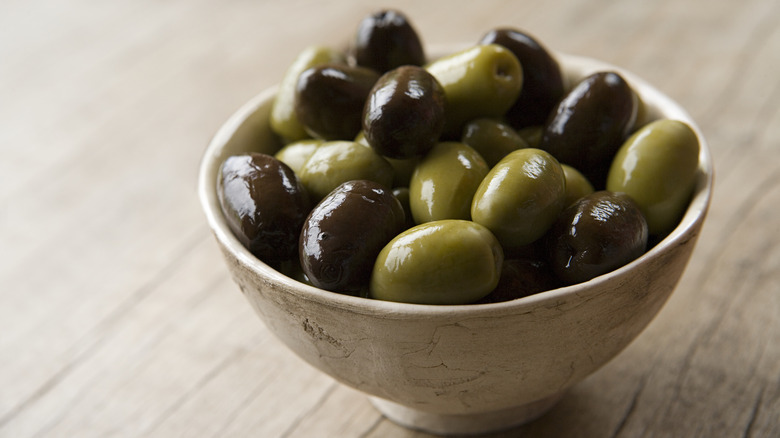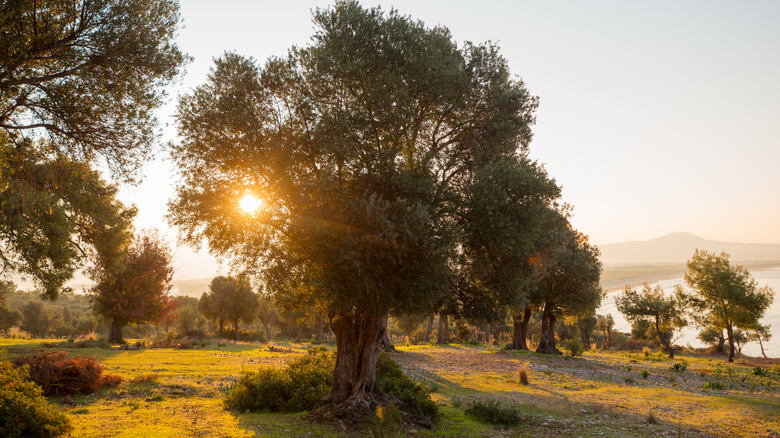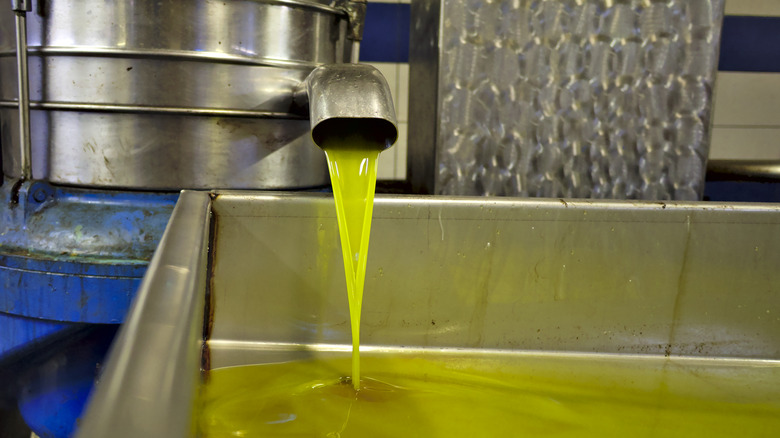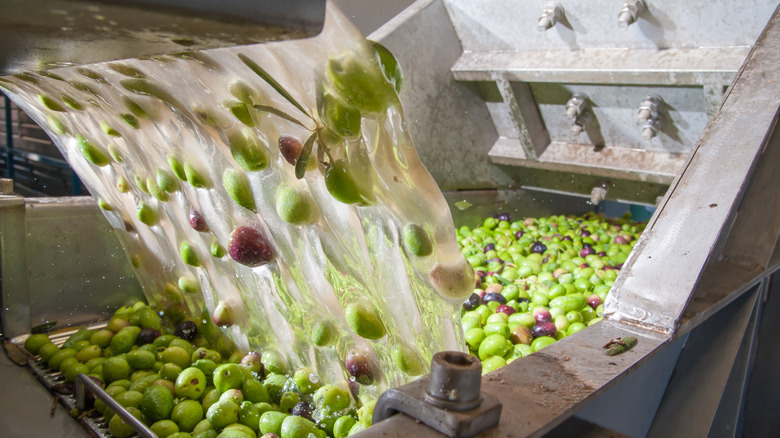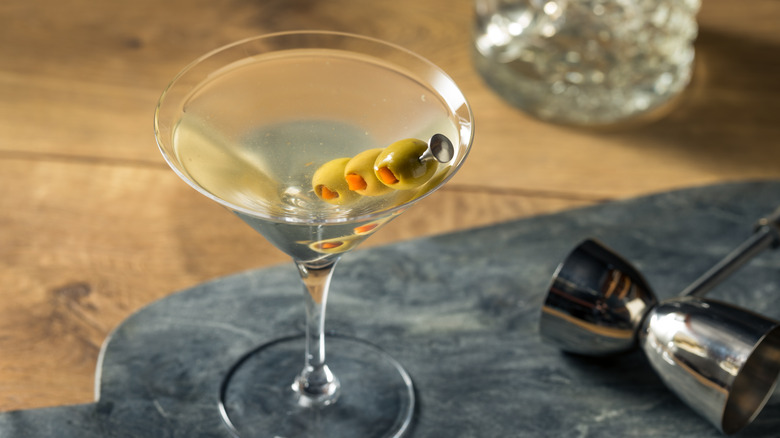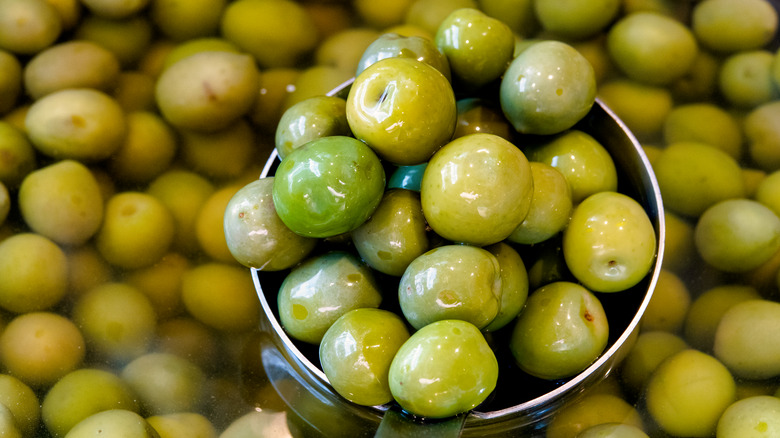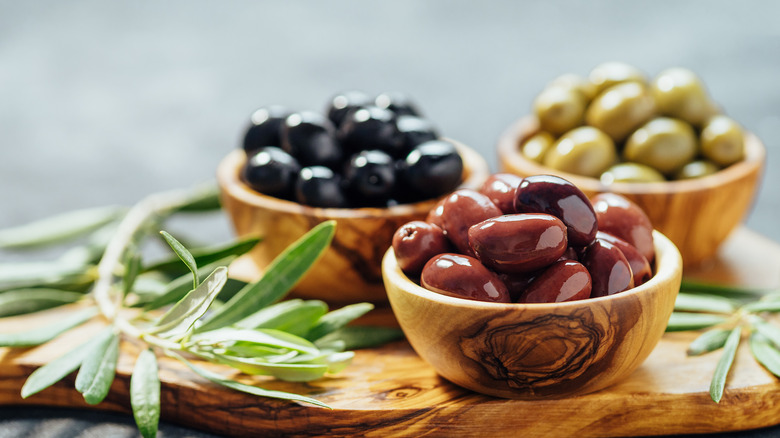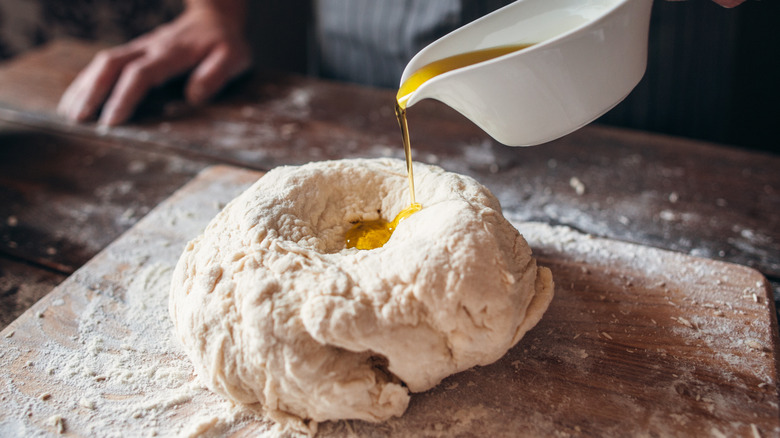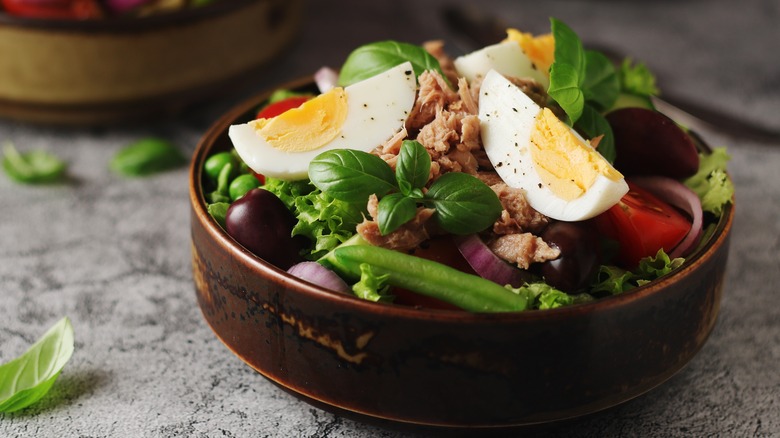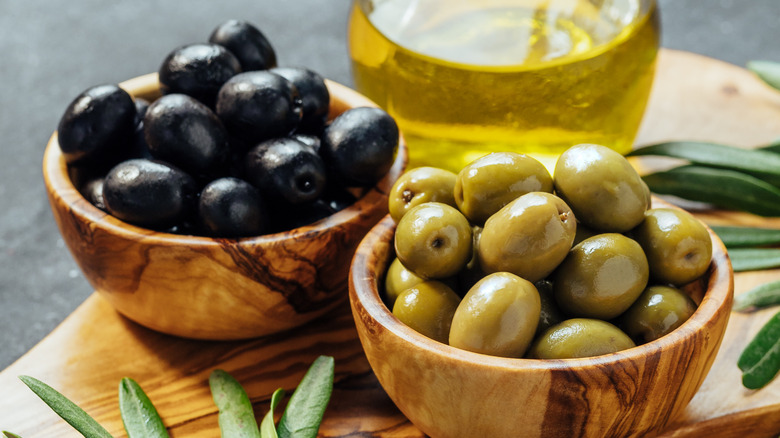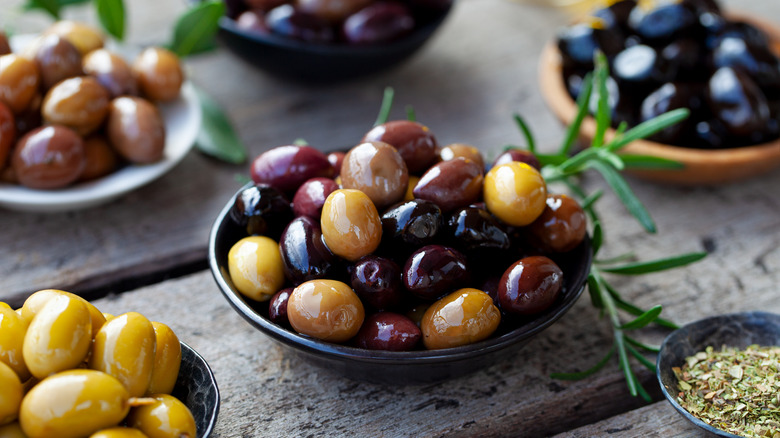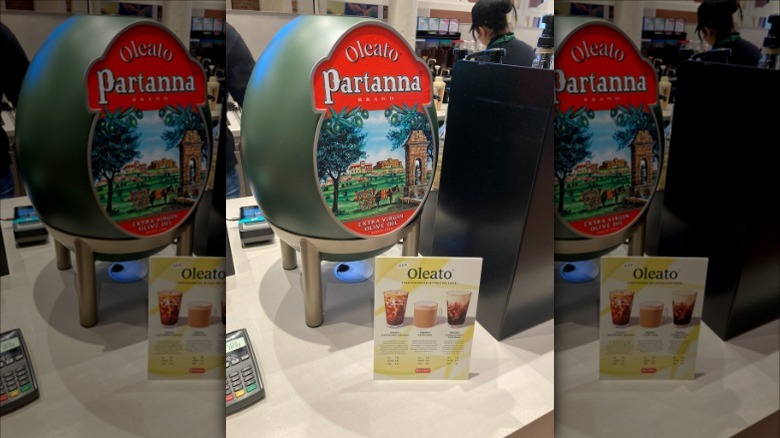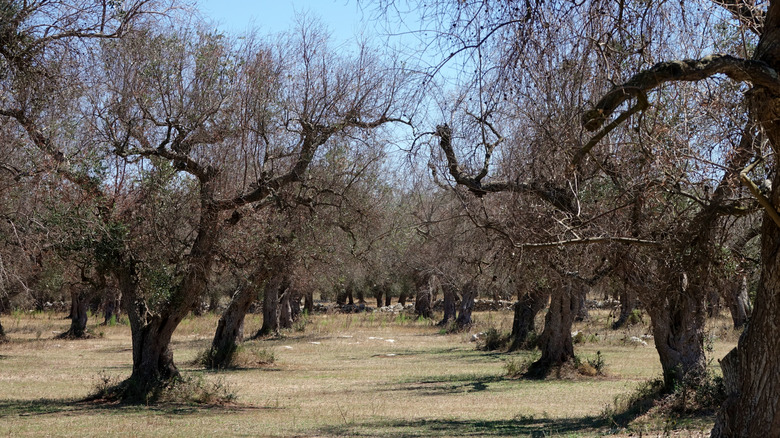The Ultimate Guide To Olives
Olives have been harvested by humans for millennia. Throughout this time, they have been celebrated by countless cultures for their distinct flavor. Today, the tree is currently cultivated in every continent on Earth apart from Antarctica.
The olive's most famous use is to make oil. Around 90% of the global olive harvest is used to produce olive oil. Yet, this is not the only culinary application for the fruit. Table olives have long been served as a form of antipasto. The fruit can also be turned into tapenade, added to pasta sauces, or used as a pizza topping. Olives even feature in some of the world's most popular cocktails, like the martini.
Come with us to explore the olive's long and illustrious history. Discover the ancient origins of this fruit, as well as the current issues it faces. We'll even let you know some of the olive's applications in current trends. Even though olives themselves are small, they've had a major impact on the world. Here is the ultimate guide to olives.
The olive tree was cultivated thousands of years ago
It is generally accepted that farming began around 12,000 years ago. The cultivation of wild olive trees commenced around 6,000 years ago, according to a study published in The Royal Society. The study also claims that the first cultivated olive trees were probably located in a region called the Levant, which refers to an area in the Mediterranean encompassing countries like Israel, Syria, and others.
During ancient times, wild olive trees were used for their oil, fruit, and branches. However, these wild trees tend to yield less fruit, smaller olives, and less oil than cultivated trees. This is part of why olives are harvested from cultivated trees today.
But some growers still appreciate the wild plant. Francisco Villanueva, a wild olive oil producer, told the Olive Oil Times: "Of course, there is great quality olive oil from cultivated olives. ... But the oil from wild olive trees has a particular flavor, a different taste. When you take it to a tasting panel, professional tasters don't know how to describe it."
Olives have long been prized for their oil
A study published in The Israel Journal of Plant Sciences hypothesizes that people were making oil from olives as early as 6000 B.C., showing the food product's long history of influence. Scientists have even found ancient pottery pieces that they think were used as early olive oil vessels. These scientists explained the importance of olive oil to The Times of Israel, saying, "With the adoption of olive oil the basic Mediterranean diet was complete. From ancient times to the present, the Mediterranean economy has been based on high-quality olive oil."
The flesh of some olives is 30% oil. It takes around 9 pounds of commercial olives to yield approximately 1 quart of oil. This high yield made olive oil useful in its many historical applications. In addition to cooking, olive oil was used to make soap, fuel for torches, and perfume, according to a study published in Food Research International.
Table olives need processing to be palatable
Freshly-picked olives taste so bitter that we do not recommend eating them. The bitterness of raw olives comes from a compound called oleuropein. For olives to be palatable this compound must be removed. There are four main curing methods used to do this: water-curing, lye-curing, brine-curing, and dry salt-curing.
According to a study published by Nature, using water and salt was historically the method of choice to cure olives. This practice was still being used by people living in Greece as recently as 1978. However, this method has its downsides. The main drawback of this approach is that it requires a great deal of time for the olives to lose their bitterness. It could even take months. Fortunately, people discovered that adding lye to the water and salt mixture sped things up.
When used on an industrial scale, the process of lye-curing creates toxic water waste. The effects of this method are not the best for the environment. As a result, there have been calls to move towards greener methods of oleuropein removal. These strategies use less water, as per The Journal of Agricultural and Food Chemistry.
Olives have significant symbolic importance
Olives are also important religious symbols. There are mentions of olives, olive branches, or olive oil in several major religions. You find them in Christianity, Islam, and Judaism.
The plant's connection to the divine is still evident today. British monarchs have long been anointed with an oil made from olives during their coronations. Justin Welby, the Archbishop of Canterbury, highlighted the importance of this practice to CNN: "This demonstrates the deep historic link between the Coronation, the Bible and the Holy Land. From ancient kings through to the present day, monarchs have been anointed with oil."
Olives have additional important uses as a symbol. In the world of politics, offering an olive branch is synonymous with brokering peace. This association has led to the olive branch's use in various international logos, such as the United Nations flag or the Great Seal of the United States.
They are a brilliant cocktail garnish
Olives are also used in mixology. Here, green olives are often used as a garnish for cocktails, most famously in the martini. The practice began when savory garnishes became commonplace towards the end of the 19th century. In the following century, American President Franklin D. Roosevelt widely popularized the use of olives in martinis, serving the olive-topped libations to many other world leaders.
Roosevelt did not limit the olive to garnish alone. He was particularly fond of the dirty martini, a version of the famous cocktail that is made with olive brine. Professional distiller Jared Brown expanded on this fun mixology fact, telling the gin brand Sipsmith: "President Franklin Delano Roosevelt played host to Winston Churchill and introduced him to the Dirty Martini, adding not just olives but a few barspoons of olive brine to the shaker." However, Churchill criticized FDR's martini-mixing abilities, saying the American president shook them somewhat messily.
There are many types, each with unique characteristics
There are over 1,000 different varieties of olives being grown across the globe today. Each of these olives has unique characteristics in terms of flavor, oil content, and texture. This means each variety has different culinary purposes.
When it comes to making olive oil, Picual is one of the most popular varieties for doing so. Grown in Spain, Picual olives were the source of 30% of the globe's olive oil from 2014 to 2019. This is partly because Picual olives are suited to olive oil production methods. Their flesh is rich in oil, and the oil itself is highly stable. This means the oil will not break down easily. On the opposite side of the olive spectrum are Sicily's Castelvetrano olives. The ultimate table olive, Castelvetrano olives are celebrated for their buttery flavor and firm texture, both of which help them to complement foods like cheese and meat.
Somewhere between these two lies the Kalamata olive, Greece's most famous variety. Despite a low oil content of around 7%, Kalamata olives are used to make olive oil as well as being a premier table olive. When sold whole, the traditional preserving process involves soaking the olives in red wine or red wine vinegar.
Olives are pretty healthy
The health-giving properties of olives are often cited, and rightly so, because the fruit does have an excellent nutritional profile. Notably, olives are packed full of antioxidants that help us regulate and prevent diseases. Registered dietician Brynn McDowell explained how this works. "Antioxidants help fight harmful free radicals in the body. Free radicals can lead to oxidative stress, which has been linked to heart disease and certain types of cancer," McDowell told Well + Good.
Olives are also fermented foods. As such, they provide bacteria and enzymes that benefit the gut microbiome, per BBC. This can have numerous positive impacts on health and well-being including an improvement in mental health, digestion, and sleep quality (via Piedmont).
High concentrations of sodium are one downside to consuming olives. Around 4 tablespoons of Kalamata olives can contain up to 16% of an adult's daily sodium intake. This is an important statistic to keep in mind when you are eating olives regularly, as high sodium intakes have been linked with several health issues.
Chefs adore olive oil
When it comes to the kitchen, olive oil reigns supreme. Most home cooks feel confident drizzling extra virgin olive oil over finished dishes or using it as a salad dressing. However, the oil is perfectly suited to just about all cooking processes. This is because, under most circumstances, heating the oil will not damage its flavor or make it any less healthy.
Many chefs also laud the flavor of olive oil. Its complexity, along with pepperiness, makes it delicious. Good olive oil should demonstrate a fruity flavor and distinct bitterness. Versatility is another reason why chefs love cooking with olive oil. Chef Lino Sauro described its many uses in Hospitality Magazine: "I use it for seasoning vegetables, salad and pasta, dipping bread, and poaching seafood or meat. It's an amazing marinade for raw fish or vegetables and for cooking at low temperatures." At some restaurants, olive oil is even a component in desserts.
They can be used for more than antipasto
Too often, olives are seen to serve two culinary purposes. The fruits can either be made into oil or used in classic antipasto recipes. Of course, olives are extremely well suited to both applications. But there is a world of gastronomic opportunities available to olives.
A brilliant use for olives is to incorporate them into a loaf of bread. Simply rinse the olives, remove their pits, and scatter them throughout the dough. Aside from featuring delightful chunks of olive, the baked bread will also benefit by adopting a softer texture. This is because the oil released by the olives inhibits the formation of gluten.
Olives that are grown in specific areas gain regional importance. A consequence of this is the fruit's appearance in regional specialties like salade Niçoise. Created in Nice, salad Niçoise celebrates many of the area's local ingredients including anchovies and Niçoise olives. The latter's intense, nutty flavors are an important part of this salad.
The color of olives comes from their ripeness
It is a common belief that the color of olives relates to their variety. This is not true. The color of an olive indicates at which ripeness it was picked. Green olives are picked early when the fruit is still unripe. Black olives are harvested later on when the fruits are already ripe.
Ripeness also affects characteristics other than color. Flavor and texture are also impacted, as expert Shea Rosen told HuffPost: "Generally, green olives are denser, firmer and more bitter than black olives. But the taste and texture of any olive depends on the method and duration of the curing process."
Black and green olives have very similar nutritional profiles. However, when it comes to sodium, there are significant differences. Green olives can contain around double the amount of sodium than their black counterparts. But both olives contain a good amount of salt.
Unpitted olives are superior
Pitted olives may be quicker and easier to eat, since you don't have to pause to remove their centers. But they can't compete with unpitted olives when it comes to flavor and texture.
America's Test Kitchen highlighted this when they tested a variety of pitted and unpitted olives. The experiment found that pitted olives had a salty, one-dimensional taste and soft, mushy texture. It was hypothesized that brine coming into contact with the olive's center was responsible for these unsavory features. On the other hand, olives that were not pitted before packaging retained their firm, meaty texture and nuanced flavor.
Buying whole olives and removing the pit just before serving is the best way to prevent loss of flavor and degradation of texture. Removing the pit is easy; just smash the fruit with the side of a knife. Then, you can extract the pit yourself. For another option, you can spit out the pit during consumption. Just remember to provide a bowl for the discarded pits. Also, warn your guests so nobody cracks a tooth.
Starbucks is making coffee infused with olive oil
In February 2023, global coffee giant Starbucks introduced the Oleato line to its cafes in Italy. Oleato — which means "with oil" in Italian — is a group of Starbucks coffee products that have been infused with olive oil.
Amy Dilger, the brand's principal beverage developer, explained the textural benefits of this addition for Starbucks: "The infusion is really important. When you infuse Partanna extra virgin olive oil by steaming or shaking it with oatmilk, it creates this luxurious, textural experience that's similar to whole milk." Partanna's olive oil is made from Castelvetrano olives.
Reactions to the Oleato line have been mixed. Some publications have said that the blend of olive oil and coffee is unpalatable; others say it is enjoyable. Americans in Southern California will be able to make their own judgments starting in spring 2023, when a local launch of Oleato is planned for Starbucks.
A disease is decimating Europe's olive trees
Xylella fastidiosa is a bacteria that is ravaging European olive groves. The bacteria slowly kills olive trees by preventing water from traveling through the plant. Over $1 billion in damage has been reported in Italy's Apulia region alone.
There isn't an easy cure once the infection has taken place. As such, preventing the spread of the bacteria is the only way of limiting the destruction. Speaking to the BBC about the infection, Nicola di Noia, a crop scientist, said: "It is an unprecedented ecological, environmental disaster. We can't just get caught up in environmentalist passion. We have to be scientific."
Unfortunately, Italy's initial response to the arrival of Xylella fastidiosa wasn't good enough. Primarily, Italian leaders were not quick to act. Officials were sidetracked with a local investigation into scientists who had alerted the area of the infestation. This didn't help to slow the spread of Xylella fastidiosa. Today, strains of the bacteria have been reported in France, Spain, and Portugal.
Climate change is altering the olive growing landscape
Olives require consistent, dry weather during the summer. If it gets too hot, the fruit will be ruined. If it rains too much, an insect known as the olive fly will destroy large quantities of the fruit. Climate change is causing an increasing number of extreme weather events, leading to the aforementioned situations, which can damage olive oil production.
These environmental changes are making things hard for olive growers in the Mediterranean region. On the other hand, these rising temperatures are allowing new parts of the world to begin experimenting with growing their own olive trees. For example, many established winemakers in Bordeaux, France are starting to plant olive trees. Sadly, this is because the local climate is becoming unsustainable for their famous grapes. There have even been attempts to plant olive groves in the United Kingdom, although these have met mixed results.
